
While compression socks are the most common compression legwear among all the others, compression tubes are trending like never before, especially for professional athletes! They are being seen on many famous basketball or soccer players, particularly, which is why they quickly got caught on fire by amateur athletes and sports enthusiasts under the influence of sports icons. Now, you might be in the confusion of not being able to decide if you should go for the typical compression socks or these trending sleeves instead. Well, no more headaches! I am here to help you decide better on which one to go for! Let this be the complete guide of compression sleeves/tubes for you!
History 101
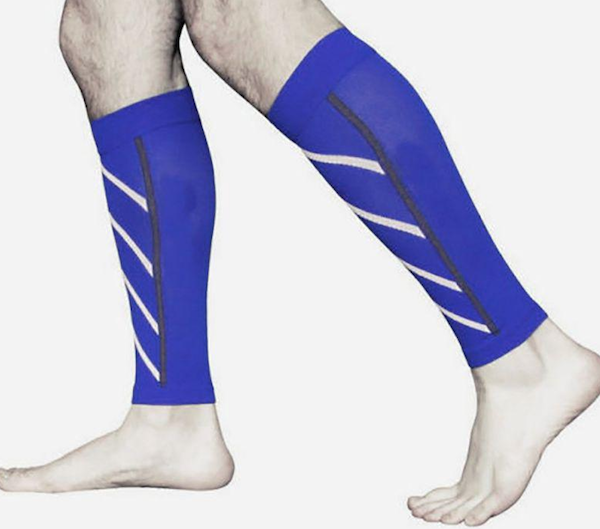
Let’s start off by hitting the very basics of these multi-functional tubular gears. They can also be known as calf-tights/tube socks/sleeves.
They are invented around 50 years ago, in 1967, which is the same year that America’s first professional soccer leagues were established. Oh, did I mention who invented them? These trending tubular gears are invented by the Nelson Knitting Company of Rockford, Illinois. (Just in case this question made the appearance at the quiz bar you visit every Saturday night so you can answer this pressure free!). Brainy is the new sexy!
These Sleeves Provide More Support to the Lower Extremities Than You Can Imagine

You may have seen them worn by your favorite sports stars and thought they were cool. You have probably admired how compression tube/sleeve makes lower limbs appear more powerful and robust. Contrary to popular belief, these tubes are not just a sportswear fashion statement. They are an essential piece of blood circulation optimizing gear that helps athletes in training and competition by preventing tendon, muscles, and skeleton pain during intense activity.
Ever had a morning run and came home to a sore knee, ankle, and calf muscles? Ever wondered why these so-called relaxing exercises are causing you pain? Where are those feel-good hormones? Ever thought you were simply too old to endure too many arduous exercises? You could be right, but first, understand the value of the tubular gear.
Compression leg tube is intrinsic wear for everyday people engaged in activities that put stress on their lower extremities. They are essential for anyone struggling with pain in their lower extremities after periods of strenuous activity. They provide comfort for ordinary people trying to improve their health and wellbeing through frequent vigorous exercise such as swimming, cycling and running. These sleeves also provide support to people involved in occupations that require significant periods of walking and standing.
What Causes Pain in Your Lower Extremities?
Strain and increased tissue vibration are the causes of the pain in your lower extremities after an intense workout. The exact mechanism of pain resulting from exercise is still a subject of debate in research. But we know that certain types of pain affect your lower extremities.
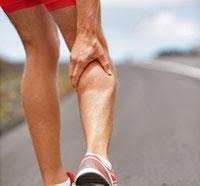
- Leg cramps are involuntary muscle contractions caused by over-excited nerves during or after strenuous workouts.
- Calf and Achilles strains affect the calf muscles where they are attached to the Achilles tendon on the heel bone.
- Shin splints are pain emanating from the tibia, also known as the shinbone. The discomfort may be caused by a hairline crack or inflammation on the muscles attached to the tibia bone.
Nope, Lactic Acid Does Not Cause Pain After Strenuous Exercise
There’s a general misconception—an old wives’ tale—that lactic acid is responsible for pain in your lower extremities during and after strenuous workouts or activities. However, the theory has been debunked and the culprit revealed to be Delayed Onset Muscle Soreness or (DOMS).
Your body usually gets muscle energy from burning glucose. The process—known as aerobic energy production—requires oxygen that is acquired from the blood. Under duress, while exercising, your muscles are crying out for oxygen, which is also why your heart rate goes through the roof.
However, intense workouts require more energy than your body can produce through the aerobic process. Your body makes up for the deficit through an anaerobic channel: production of energy without oxygen. The process involves the use of a substrate (pyruvate) that is converted to lactic acid as energy and released through a rapid reaction. Typically, the lactic acid build-up goes down soon after your intense workout or extensive of muscles.
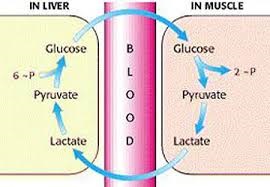
Research confirms that lactic acid is transported to the liver, where it is converted back to pyruvate immediately after your workout. Therefore, lactic acid cannot be responsible for the pain in your lower extremities, especially several hours after the fact. It’s long since been processed and removed from the bloodstream.
Delayed Onset Muscle Soreness (DOMS) generally develops long after your exercise is over. Characterized by pain in the muscles, tendons and skeletal region, the cause of DOMS is unknown, but its cure is improved blood circulation in the affected area(s). Scientific research holds that DOMS maybe your body’s attempt to boost tissue recovery caused by overexertion. The mechanism involves increased blood supply to the affected region.
How Does Blood Circulation Contribute to Healing in the Lower Extremities?
Your blood feeds your muscles, skeletal system, and tendons with the oxygen and nutrients they need to function properly. Blood is also tasked with transporting metabolic waste to relevant body organs where they are either detoxified or eliminated. For instance, carbon dioxide is taken to the lungs, while lactic acid is taken to the liver. Without an adequate blood supply, biochemical processes in your lower extremities will be disrupted.

Circulation is partially regulated by two types of blood vessels that supply blood to your lower extremities. Veins and arteries are different in structure and function. Arteries, for instance, carry blood with oxygen and nutrients (oxygenated blood). Veins, on the other hand, carry blood without oxygen (deoxygenated blood).
Veins take deoxygenated blood to the heart, while arteries take oxygenated blood away from the heart to the rest of the body.
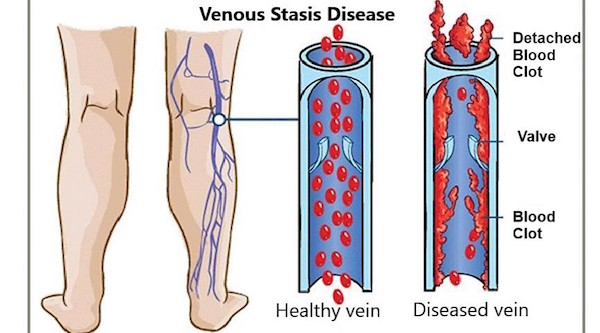
Both blood vessels must pass through the heart, which pumps the blood to all body systems. The heart provides the force that propels blood to flow. However, blood in the arteries flows at a higher pressure compared to blood in veins; that is why veins have valves that prevent the backflow of blood. Flow in the veins of the lower limbs is much slower, making the venous return (blood flow from the lower limbs to the heart through the veins) difficult.
The process of circulation is further complicated when energy and oxygen supplies are in exceptionally high demand. Researchers assert that the decreased blood supply in your lower extremities is the primary reason why you experience pain and soreness after strenuous activity. Therefore, countering this phenomenon requires improving blood supply during and after intense workouts.

Tubular Gear to the Rescue
One effective way of increasing blood supply during intense workouts to prevent tissue overexertion is through the use of compression leg sleeves. The sleeves are the best solution to alleviate pain and soreness in your lower extremities after an intense period of physical activity. The tube, like all compression gear, works on your veins to improve blood circulation. The compression tube has different pressure points along its length that act on your veins. The pressure is measured in mmHg (read as millimeters of mercury).

The difference in pressure is known as the Graduated Compression Factor. The varying pressure pulls up your blood; consequently, improving circulation. The circulation ensures oxygen and nutrients reach your skeletal muscles, calf muscles, and tendons. It also improves the exchange of needed metabolites in the lower extremities that prevent pain and soreness.
The blood circulation boosters also combat circulation deterrents. One of the main hindrances of circulation in this region is gravity, which operates in the opposite direction of the venous return pathway (the flow of blood from the lower extremities back to the heart), straining the flow of blood to the heart.
It is crucial for your lower extremities to get oxygen and nutrients from the blood during rigorous workouts to prevent injuries that form because of circulation inadequacies. The tubular gear maintains a steady flow of blood from the lower limbs to the heart, enabling the tissues those regions to receive ample supplies of oxygen and other essential nutrients, and remove metabolic wastes as you exercise. Thus, the probability of tissue injuries is significantly reduced.
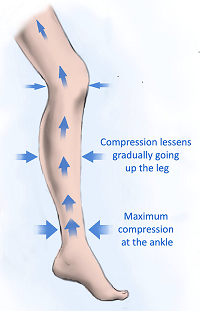
They are Worn By Sports Enthusiasts and Athletes for Muscles Support to Enhance Sports Performances
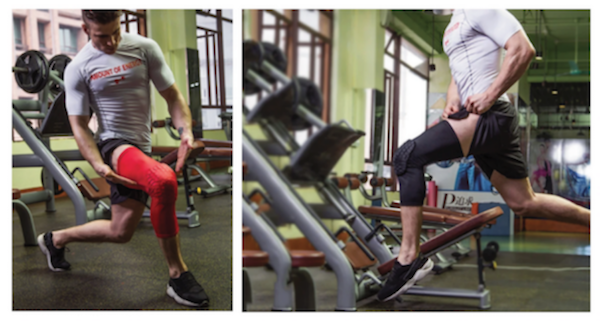
After bringing you on a tour of medical scientific facts, I would like to state the health benefits and advantages of wearing these amazing sleeves, especially for athletes and sports enthusiasts in layman terms.
- Improved circulation and blood flow which means more distribution of oxygen and nutrients are delivered to the muscles
- Reduce delayed onset muscles soreness that can happen 24 to 72 hours after various exercises
- Flushes the body of waste products including carbon dioxide and lactic acid
- Reduces recovery time from injuries, strains and also accelerate the healing time of the wound
- Provide knee support to avoid injury of the knee
- Better management of body temperature
- Improves perceived exertion
- Provides physiological advantages- These can be simply feeling like you look better, which can boost your confidence and motivation
- Aids in proprioception or how you sense your body’s position in space creating a more efficient movement aspect for the muscles
- Moisture can be repelled or “wicked” away from the body, allowing it to evaporate faster
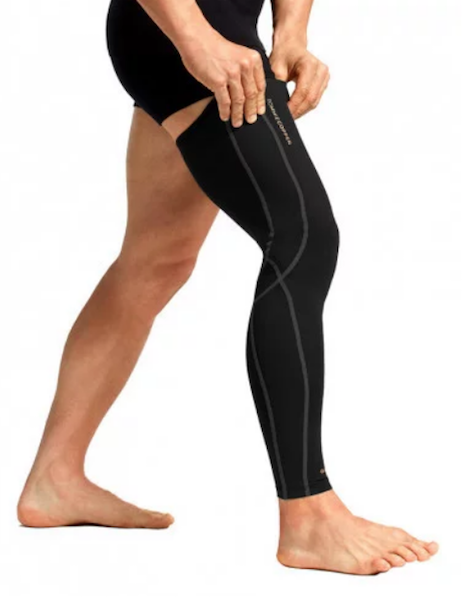
All and all, these tubular gears are suitable for every individual that is active in sports, especially runners like marathon runners, triathletes, etc. Wearing sleeves of over-the-knee length during running-intensive sports can highly reduce the risk of knee injury. As a matter of fact, over 10 million visits were paid to the clinic due to knee pain and injury in 2010 (not even exaggerating). Bear in mind, knee injury is one of the biggest murderers of professional athletic careers.
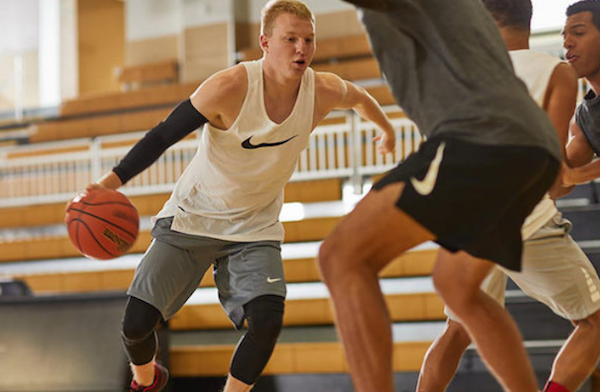
That is why these tubular gears are so popular among all athletes because of the value they bring to the table, in terms of enhancing sports performance, boosting confidence, reducing the risk of injury, accelerating recovery time, reducing muscles soreness and also help with wound care management. All these add up to one amazing treatment and support that every athlete and sports enthusiast need. Now you know why those sports icons are rocking in these tubular gears. Not just as fashion statements but because of the actual health benefits provided by them.
What is the Difference Between These Socks and Sleeves?

Another common question asked is what is actually the difference between these two? Socks? Sleeves? Aren’t they supposed to function under the same principles and provide the same support or treatment? Yes. While both the sleeves and socks operate on the same principles, the two gears are used for different purposes. The socks are used by long-distance travelers, pregnant women, and workers with schedules that require long periods of sitting or standing, such as nurses. The socks also prevent blood clot formation, deep vein thrombosis, blood clot spiders, and edema.
On the other hand, tubings are used to enhance circulation in your lower extremities after intense activity. In fact, the tubular gear is supposed to be worn during long and demanding exercises. Wearing them while at rest will cause your feet to swell and ache because of fluid retention.
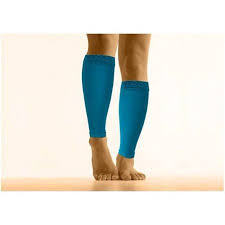
The socks work on the entire lower limb region from the feet, ankles, calf, thighs and pelvic region, depending on the length of the socks. In contrast, the tube works on the ankles and calf alone because the region of the Achilles tendon and tibia bone are prone to injury during intense workouts. The bandage looking gear reduces muscular vibrations that tire your muscles and weaken their ability to function at peak performance by providing firm support. The support prevents premature exhaustion during exercises.
Furthermore, these sleeves prevent the development of tendonitis, shin splints, and muscle cramps after an intense workout. Wearing the bandage will boost blood supply in your lower extremities and improve the tissue healing process.
The Takeaway
Get Your Pair of Tubular Workout Clothing for Your Legs
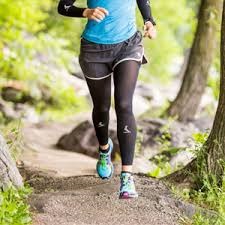
Tubular workout clothing is tremendously beneficial to a vigorous and/or extended workout routine. The routine can be repetitive training, daily workouts, or demanding occupational activities. If your schedule includes any of these activities, there’s a greater likelihood of injury in the lower extremities. A good preventative approach would be to purchase lower limb sleeves. The sleeves will enable you to remain consistent in your routine and improve the health of your lower extremities.
Last and Final Advice
The last and final advice I can give to you is to always purchase through reputable sites. More importantly, always read the product description for a better understanding of the material used in manufacturing them to avoid potential allergic reactions. Second of all, alway browse through the customer reviews and star rating of the products! Be it Amazon or any other selling platform. ALWAYS know what you are buying into. This can reduce the chance of you being unsatisfied after receiving the product and having to go through the hassle of shipping and returning. Bear in mind, shipping costs are not covered by most of the sellers out there in the world of E-commerce. It’s not just a waste of time, but money and effort, too!
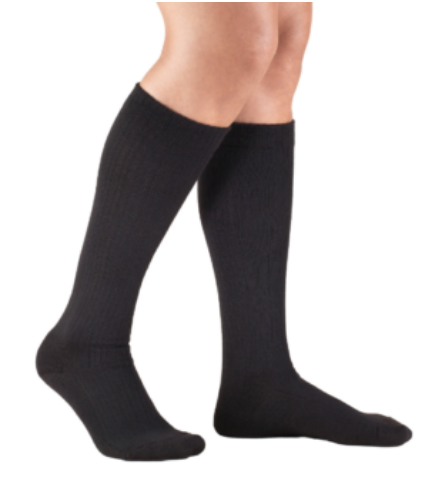
But if you are still contemplating about getting circulation socks instead of sleeves after deliberating and comparing them thoroughly in the head, check out our wonderful support socks collection at Comprogear.com! We sell nothing but only affordable, high-quality knee high circulation socks to assist you in achieving better leg health by reducing swelling and pain in the lower extremities. Better yet, we practice an honest return policy of 100% money-back guarantee to ensure our customers the best and hassle-free buying experience! We couldn’t be more thrilled to take part in your journey to better leg health!
This page last updated January 7, 2022
